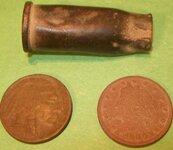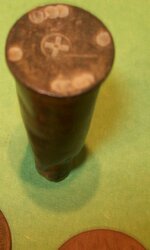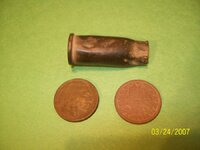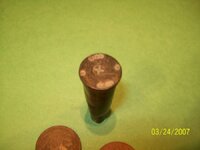hishergarrett
Jr. Member
I recently found this at a site that I believe is from the turn of the century.I believe it to be a bullet casing but I don't know what kind.It tapers down in the front and it looks to be some sort of rim fire.I included the two nickels that wre also found for reference on size and date("V" is 1900 and "Buffalo" is 1920).Any help is greatly appreciated.Thanks.










